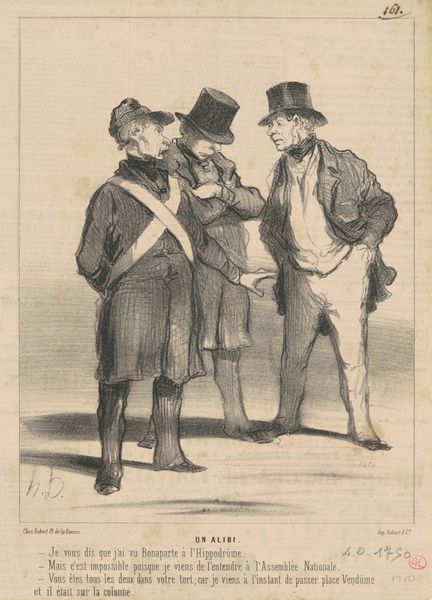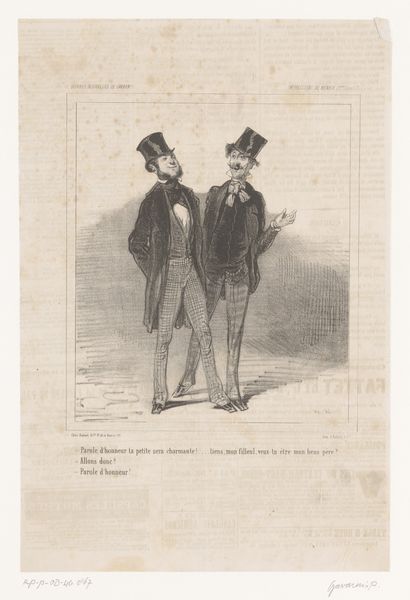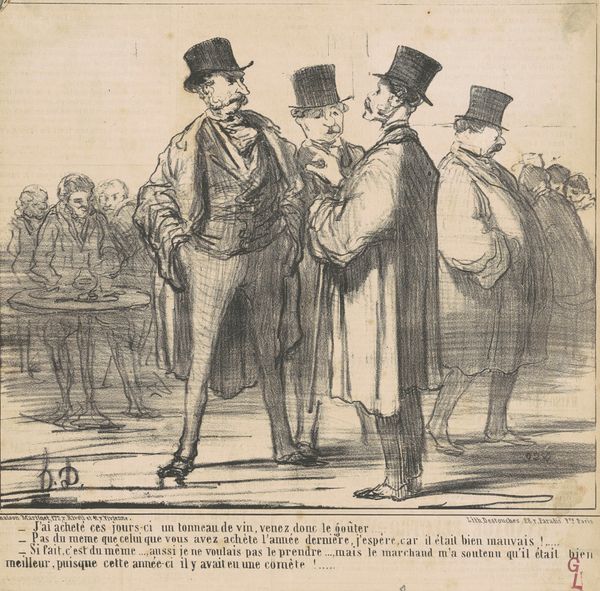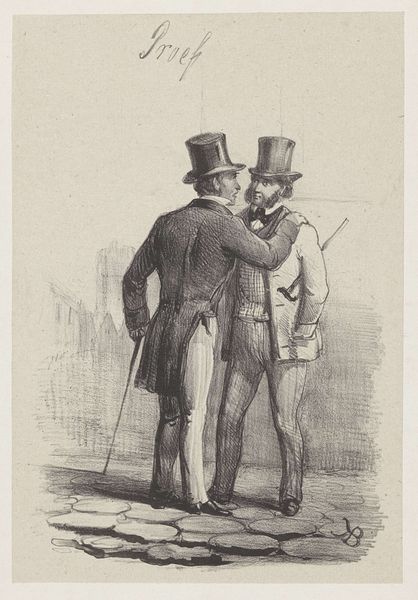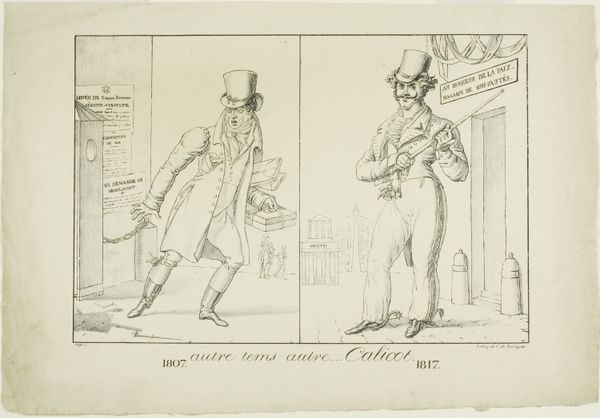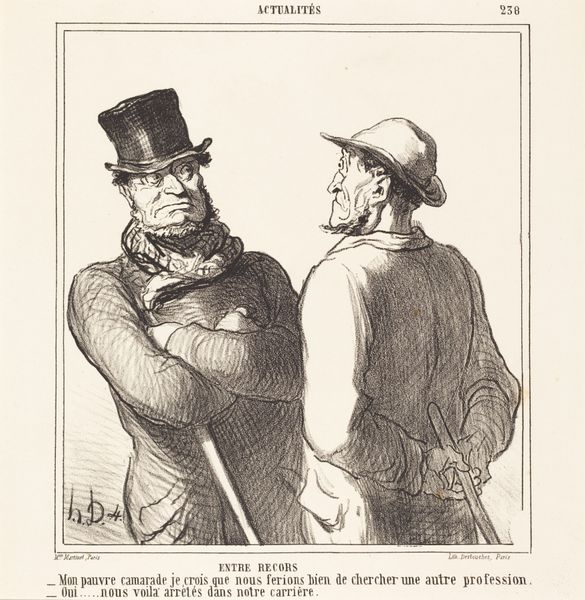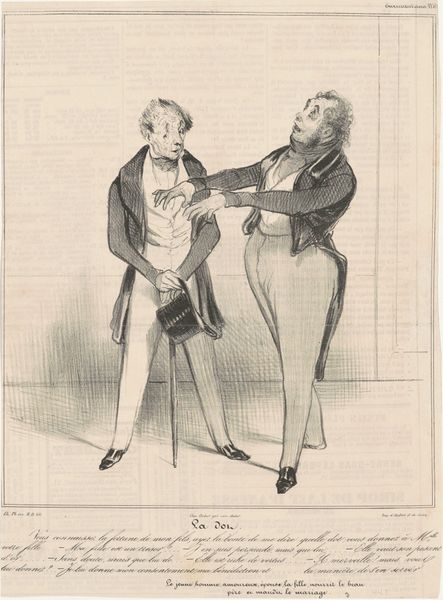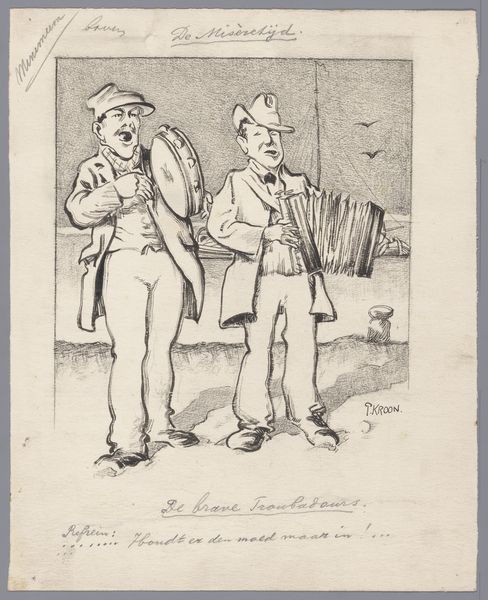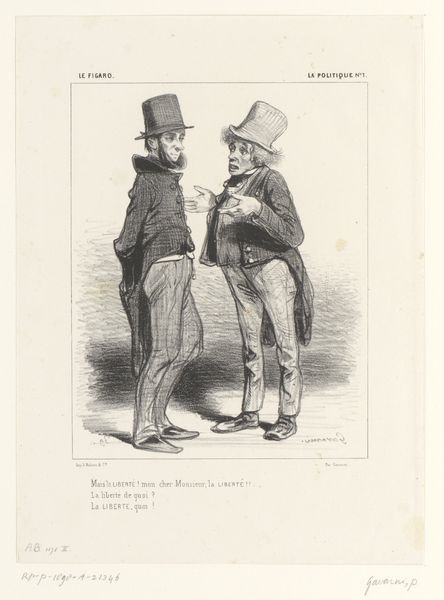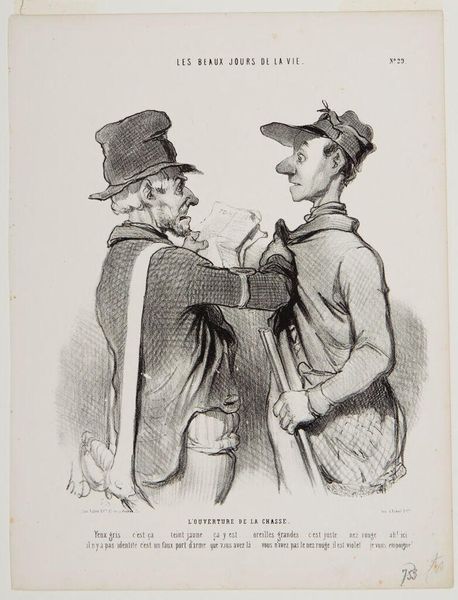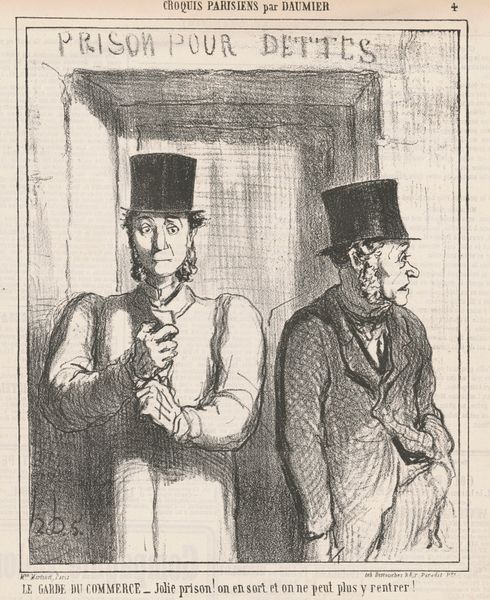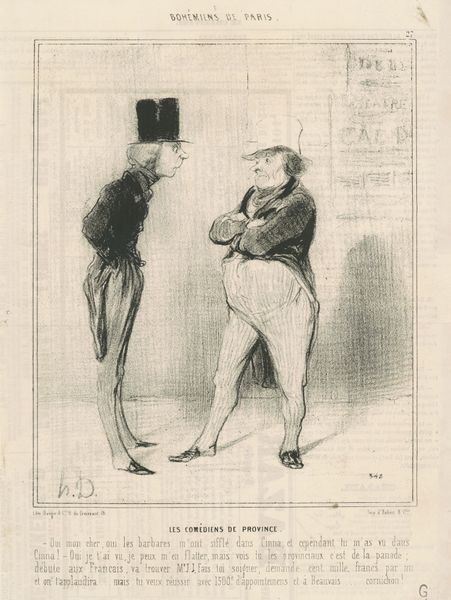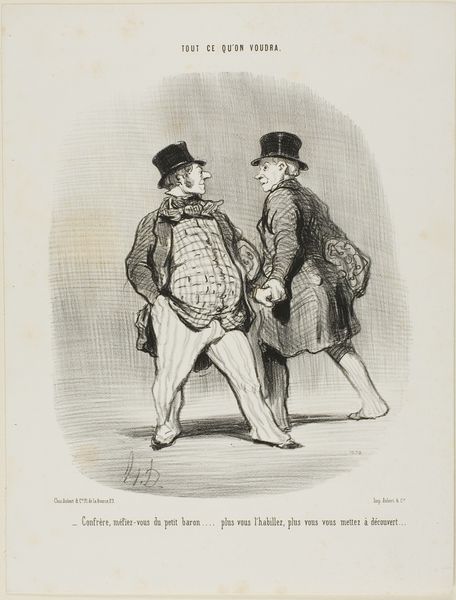
Spotprent op de verkiezingen voor de Provinciale Staten in augustus 1880 te Amsterdam 1880 - 1888
0:00
0:00
drawing, pencil, pen
#
portrait
#
drawing
#
narrative-art
#
caricature
#
pencil sketch
#
pen-ink sketch
#
pencil
#
pen
Dimensions: height 230 mm, width 155 mm
Copyright: Rijks Museum: Open Domain
Editor: This is a political cartoon from around 1880 by Piet Hein Testas, likely a pencil and pen sketch. It depicts two men, one holding a sign referencing "Burger Plict" - Citizen's Duty. There's something satirical about the contrast between the figures, and the sketched quality almost emphasizes that. What can you tell us about this piece? Curator: For me, this drawing isn't simply about the image it presents, but the processes and context surrounding its production and circulation. Think about it: inexpensive materials like pen and pencil, accessible techniques leading to its potential for reproduction on a printing press to sway popular opinion. The very materiality speaks to the means by which political ideologies were constructed and disseminated during that period. The drawing reduces people into commodities that can be used and abused as per need. Editor: So, you're focusing less on what it represents and more on what the artist *did* to create this commentary? Curator: Precisely! Consider how the choice of caricature underscores a sense of accessible critique. It lowers the perceived status of politicians, which democratises opinion-forming. Why did the artist choose to represent these figures in such a way? It probably points to anxieties and class tensions of the time as politicians rise in power through capitalist processes. Even the scale of the drawing itself matters. Was it made for individual consumption, or as a master for a larger print run? What labor was involved, and where was it distributed? Editor: That's a really different way of looking at it. I was so focused on just deciphering the message. Curator: The message itself is shaped by the material conditions of its making! And the reception, consumption. The idea that citizens and politics could have something tangible in common. To further the ideas that the artist or other figures believed. Editor: So, seeing the work in terms of the physical work, production methods, and materials… It kind of changes the whole idea. Thanks for pointing that out. Curator: Glad to shed new light on it. Every art work holds stories in its textures, labor, and historical context. It's up to us to unearth it.
Comments
No comments
Be the first to comment and join the conversation on the ultimate creative platform.
